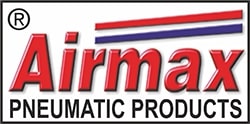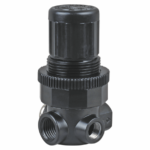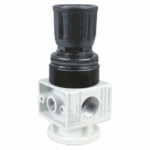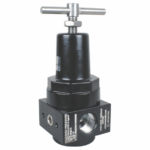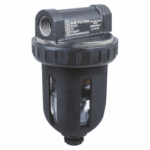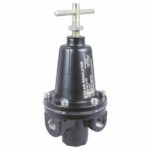The Evolution of the FRL Unit: Smarter, Smaller, and More Reliable
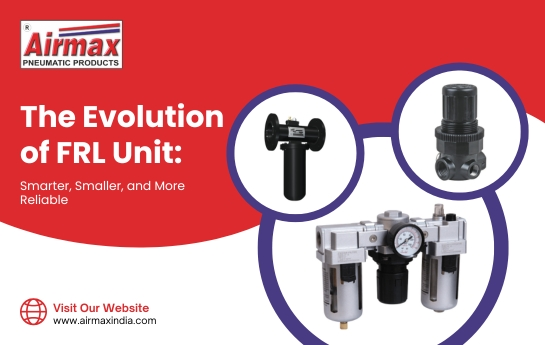
Compressed air acts as a secret power source behind many machines used in industries every day. However, to do this work well in the air, it must be clean, stable, and treated properly. This is where FRL units, filters, regulators, and lubricants play an important role. They ensure that the air flowing through machines is clean, protecting the equipment and running things smoothly. Over the years, these FRL units have gone through a major change – smarter, smaller, and more reliable than ever, making lifespan easier for industries that depend on compressed air.
What is an FRL Unit?
An FRL unit is basically the heart of any pneumatic system, often called an air preparation unit because it prepares compressed air before entering machines. It is made up of three major parts.
The filter cleans the air by removing dust, dirt, and moisture that can damage the equipment.
The regulator ensures that the air pressure remains stable, so machines do not face sudden ups and downs.
Lubricants add a good fog of oil to keep the moving parts smooth and long-lasting.
Together, these three ensure that the air is clean, stable, and ready to use. Without an FRL unit, compressed air quickly wears out equipment and machines, causing more breakdowns and downtime.
The Early Days of FRL Units:
FRL units used to be considerably larger and more expensive than the smaller types we have nowadays. It worked, but not without challenges. Maintenance was a continuous task, as well as filters closed quickly, regulators often lost accuracy, and lubricants required frequent investigation. These old units also took more space, which made the installation difficult in the setup of the hectic industry.
Still, they played an important role in the running of the machines, protecting them from harm and extending the lifespan of the applications. Even though efficiency was not at its best, the early FRL units showed industries how important clean and controlled air could be. They determine the platform for today’s clever, small, and more reliable versions that keep factories with less trouble.
The Shift Towards Smarter FRL Units:
As industries started moving towards accurate automation, the need for better air preparation became stronger. FRL units began to develop in smart, more efficient versions. Today’s FRL units are created with characteristics that make them easy to use and are far more reliable. For example, they provide accurate pressure control, ensuring that machines always receive the correct amount of air without ups and downs.
Many units also come with see-through containers, so operators can immediately check the air quality and spot when the filter needs to be cleaned or replaced. modular design adds another layer of features, allowing industries to adapt and expand their setups as required. In addition, these modern FRL units are fully compatible with today’s advanced pneumatic systems, which makes them an ideal fit for automatic operation. By addressing chronic challenges of heaviness and high maintenance, smart FRL units have become efficient, flexible, and essential tools to keep industries ready for the future.
Smaller FRL Units Compact Yet Powerful:
As industries and workshops became busy, space became more valuable, and industries began asking for compact air preparation solutions. This led to the rise of small FRL units that provide the same reliable performance without too much space. These compact designs are easy to install, fit into tight places, and reduce the state of affairs around the machines.
Despite their small size, they do not compromise on performance. The air is still filtered, regulated, and lubricated with equal level care. Small FRL units are especially beneficial in industries like as packing, electronics, and automotive manufacturing, where machines operate continuously and efficiency is crucial. By saving space while keeping the performance strong, these FRL units have become a smart option for modern, space-conscious operations.
Reliability The Core of Modern FRL Units:
Modern FRL machines are designed with reliability in consideration, as industries are unwilling to have downtime or unexpected breakdowns. Today’s units are designed using durable, corrosion-resistant materials that are also strong in the event of hard work. With better seals and advanced design, they run long and provide continuous performance without continuous repair. This means focusing more on low maintenance, low activity, and productivity.
Industries such as food processing, motor vehicles, and textiles depend a lot on this dependence because even a small air supply issue can slow down the entire production line. By ensuring stable air quality and reducing the wear on equipment. Modern FRL units provide businesses with confidence in the assurance that their systems will continue to operate successfully for many years. In short, reliability is not just a feature; this is the promise that makes FRL units an essential part of every pneumatic setup.
Benefits of Advanced FRL Units:
- Advanced FRL units do more than control clean and compressed air only.
- They provide clean, regulated, and lubricated air, which extends the lifetime of pneumatic devices and reduces wear.
- Better air quality means machines run smoothly and more efficiently.
- Low breakdown repair cost and reduced energy use.
- They improve workplace safety by keeping air pressure stable and meeting safety standards.
- For busy industries, they ensure reliable, long-term performance.
- Overall, advanced FRL units are a smart investment that keeps operations safe, efficient, and cost-effective.
Also read, Top 5 Benefits of Using an FRL in Industrial Equipment
Applications Across Industries:
FRL units are used in almost every industry that depends on compressed air. In
Automotive manufacturing runs the assembly lines smoothly by protecting tools and machines from air damage. In pharmaceutical production and cleanrooms, FRL units ensure clean, regulated air that meets strict hygiene standards.
The food and beverage industry depends on them to ensure product safety and quality during processing and packaging. Beyond these, FRL units are also important for general manufacturing, packaging, and textiles, where a constant air supply is critical for efficiency. No matter what happens in the field, FRL units serve as cool parents, systems as reliable, equipment as maintained, and manufacturing procedures as processes that continue forward without interruption.
Choosing the Right FRL Unit:
Choosing the right FRL unit depends on understanding the requirements of your system. The main factors include port size, which requires your pipeline, pressure range to ensure smooth and stable airflow, and lubrication of your machines to meet the needs of lubrication. In some cases, you may require only an FRL filter to clean the air, while in a high-demand setup, a full air preparation unit with a regulator and lubricant is a better option.
The goal is to ensure that your equipment always produces the appropriate air quality for optimal operation. To achieve long-term efficiency and security in assurance, always select FRL units from a reputable provider who understands various industries and can guide you to a suitable one. We at Airmax Pneumatics offer the best industrial valves for your applications. Our experts will help you choose the right one as per your requirements.
Upgrade to Smarter FRL Solutions with Airmax Pneumatic Ltd:
Watch the latest JH series FRL units. It is designed to be smarter, smaller, and more reliable for today’s industrial needs. With Airmax Pneumatic Limited, you get reliable quality, long-lasting performance, and expert support to run your operations as best.
Conclusion:
FRL units transformed from huge, heavy designs to small, intelligent, and extremely reliable solutions. This growth indicates how companies prioritize pricing, efficiency, and ease of maintenance in their pneumatic systems.
By adopting Advanced FRL units, industries can protect their equipment, reduce downtime, and improve overall performance. Investing in these modern units is not only about running machines; it is about ensuring long-term reliability, smooth operation, and safe air, which should be a priority for every innovative industrial organization.
